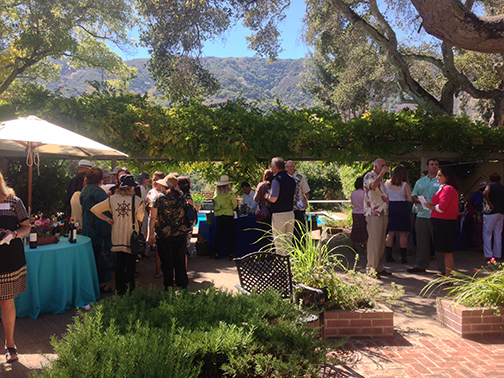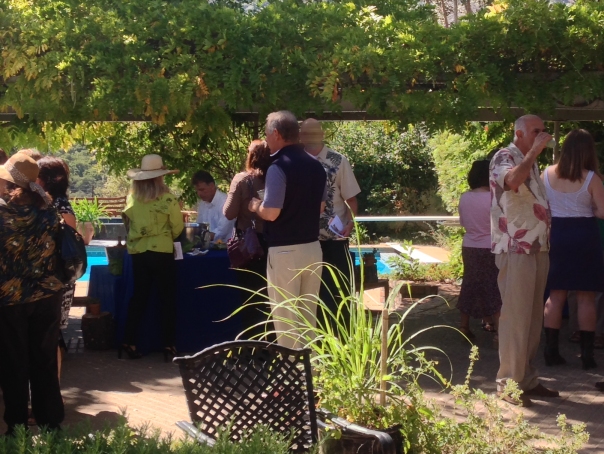REVIEW FROM A TRAVELER IN CONSERVATION

Hamanasi Resort in Belize is one of my new favorite spots on the planet. The property is clean, modern, well-staffed, and an overall delight. It is a small resort, only about 75 guests, but it seems as there are just as many sweet and courteous attendees to fulfill your every wish.
Hamanasi (translated as “almond tree” in the local Garifuna dialect) is an all-inclusive resort—including a different adventure every day. I swam under a waterfall, saw howler monkeys (including a mom with a baby in tow), manatees, agouti, sting rays, dolphins, hundreds of varieties of fish and birds, and a plethora of exotic flora and fauna.
The food is plentiful and mostly delicious. The fruit salsa cannot be beat. Freshly made bread of all varieties and fresh fruit juices and plates abound. The pineapple is so sweet that you will abandon ever eating it again anywhere else.
The most appealing thing about Hamanasi is that it is a place where like-minded people have the opportunity to converse about various subjects in conservation. In my meetings with the owners, Dave and Dana Krauskopf, their commitment to environmental sustainability is evident in their enthusiasm. I was surprised to see that they served beverages with plastic straws. When I mentioned it to Dana (when I went down to the bar to get a drink in my jammies—that’s how comfortable it is here) I could see the wheels turning in her head. My guess is that the next day, she was sourcing paper straws for the resort.
On property is an organic garden, which feeds the guests (speaking of which, Hamanasi just received their organic grower’s certificate three days before my arrival), a compost area, a beach, a pool, an adventure center, bountiful hammocks, and a pond complete with crocodiles.
I had to try to imagine what it would be like to conceptualize, design, and implement a project like this in a country like Belize. Dana and Dave had lived all over the world, including Moscow, and were experienced in sustainable precepts. Dave’s mother was very involved in the Sierra Club, so he cut his teeth on the cause.
Dana described their greatest accomplishments in sustainability with passion in her eyes. Unlike the atrocious resort next door and many other local resorts, the Krauskopfs did not clear cut and burn the property to make way for the buildings. They positioned each and every room and building in and amongst the indigenous flora and fauna. I was fortunate enough to spend my first night in the deluxe treehouse (something I would not recommend as a solo traveler as it is a whole lot of romantic space wasted…) where I took a hot tub on the deck by candlelight in the company of a lady iguana and an agouti.
Every detail was attended to perfectly, even the housekeeping staff drew my bath while I was at dinner.
I transferred to a beach bungalow with amazing breezes and views. An epic lighting storm ensued as I danced on the patio in the rain. The beach accommodations were equally enticing as the tree houses, just in a different way. I would highly recommend both.
Dana and Dave have plans to make the resort even more eco-friendly. They have procured an additional 4-5 acres behind the resort where they endeavor to have a black water processing and treatment facility, a solar energy station, and staff housing, while reforesting the lot.
I inquired about the recycling infrastructure in the country of Belize. Dana tilted her head. Since the number one industry in Belize is tourism, the fact that when you are taxied to the resort you pass mounds of plastic trash, one would think that the government would make a concerted effort to remedy that situation.
Dana gave me a brief history of the recycling infrastructure that began in 1995 (Dana and Dave began conceptualization of Hamanasi in 1991-1992). It is in need of modernization, but Dana mentioned that in parts of Belize they are using “crush and reuse” bottles for construction. Many of Hamanasi’s paths use crush glass as an concrete aggregate. Dana and Dave are working with the local governments on changing the culture of the indigenous peoples as well as remediating the recycling and trash conundrum. (FYI – I JUST HAD A CONVERSATION WITH THE MINISTER OF TOURISM AND THE PRIME MINISTER’S BUSINESS PARTNER ABOUT THIS!)
When I inquired about the functionality of local governmental entities, Dana was very complimentary in her dealings with the Belizean government. Since Belize was previously a British colony, everyone speaks English and American dollars are welcome (the currency is tied $2 BZD to $1 USD). Bribing is not necessary to run a successful business. They function under a legal system based on British Common Law. From my experience, Belize offered the best of Latin America without the drawbacks. Back to the resort itself.
When you enter the newly constructed guest dining room, you will get a treat when you look up. The trusses exhibit the traditional Caribbean architecture coddled in a 600 piece ‘puzzle’ of a Phillip Flurry design. Santa Maria and Mahogany woods embellish this dormered ceiling with cast ironed tie rods and 10-foot ceiling fans that will astound you.
I also encountered many more families and children than I had anticipated. Dana reminded me that it was spring break (Oh yea, I forgot about that) but also mentioned that when the kids come, they are unwittingly enticed into the concept of being unplugged. The children—and yes even the teenagers, of which there were a substantial number—were engaging. Even with their parents…
Amazing.
Dana’s foresight on eco-friendly travel was highly positive. She feels that the educated traveler is seeking out adventures such as this. As a mother herself of three young boys (who were zip lining with their dad that afternoon), she sees the future of travel—and environmentally conscious guests—as where the trend is going, and staying.
When I asked this forward thinking entrepreneur and mom what would be the number one thing that she and Dave would wish to pass on to their boys, with respect to the environment, she paused for a moment. “I would like for them to promote long term thinking and planning in government and infrastructure.” She paused again. “I would also like them to champion the cause of holding big polluters accountable and pay for the social costs of their activities.”
Amen, sister.
She wants for her children to have a better environment than we have today. She does not feel overly optimistic that we have not already tipped the balance.
Then I looked at her three little boys. I felt optimistic.
Hamanasi Adventure and Dive Resort is a place that I may have to visit on an annual basis. It really did feel like home, but way more fun.
Brandon Wiggins, Author, Conservationist
 She breathed deeply as her father’s voice took her back to the one summer she spent with him…
She breathed deeply as her father’s voice took her back to the one summer she spent with him…


